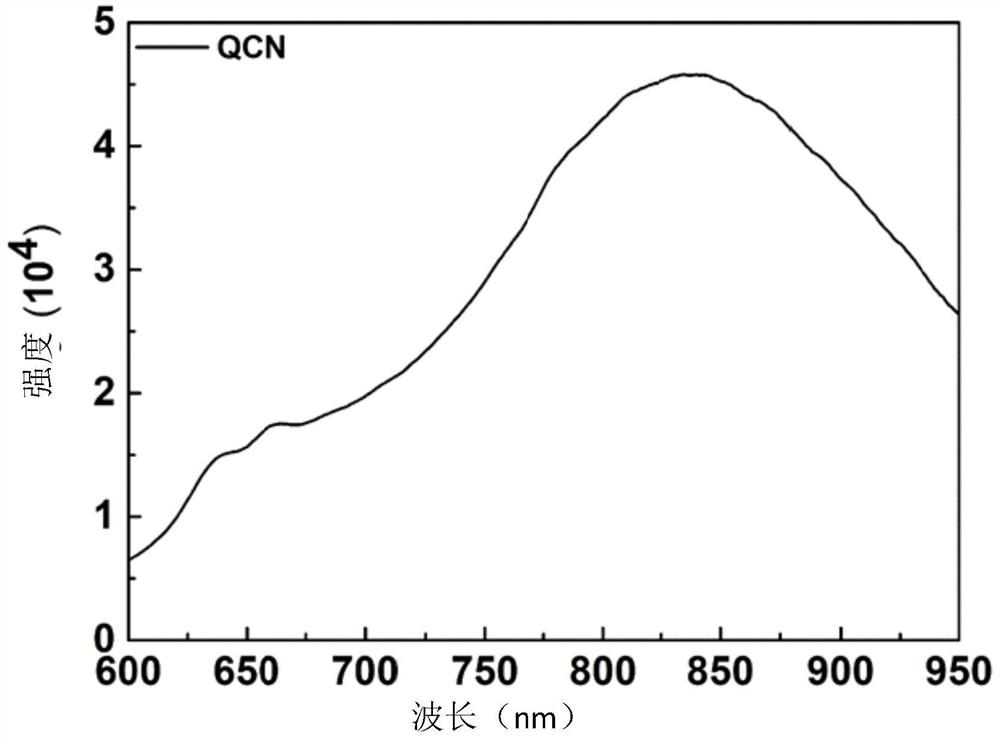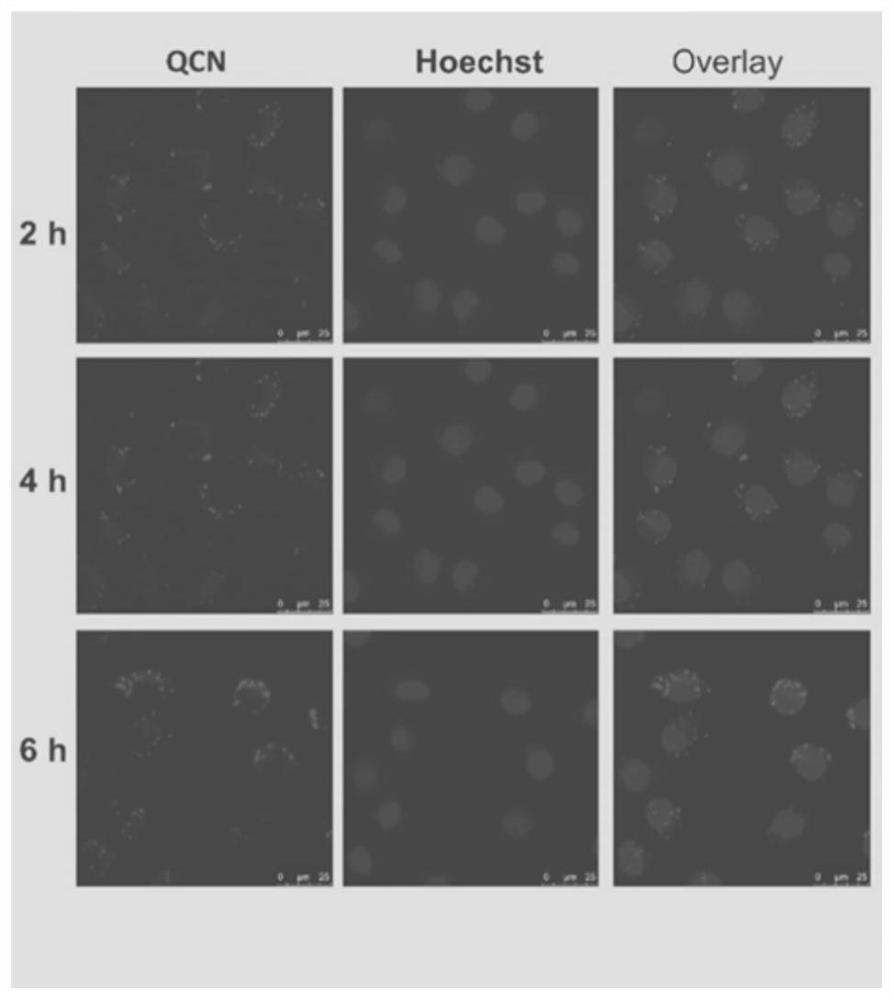Aggregation-induced luminescence photosensitizer, preparation method and application
A technology of aggregation-induced luminescence and photosensitizer, which can be applied in the field of new drug development and can solve the problems of high price, poor effect, and high toxicity to human body.
- Summary
- Abstract
- Description
- Claims
- Application Information
AI Technical Summary
Problems solved by technology
Method used
Image
Examples
Embodiment 1
[0034] This embodiment relates to a quinoxalinone derivative, the preparation method of which is as follows: o-phenylenediamine (0.1mol, 10.8g) is dispersed in absolute ethanol (150mL), and ethyl pyruvate (0.12 g) is added dropwise under an ice bath mol, 13.92g), stirred at room temperature for 12h, the reaction solution was filtered, the filter cake was washed with absolute ethanol, and dried to obtain white powder 1a, (13.6g, yield 86%); 1a (20mmol, 3.2g), K 2 CO 3 (24mmol, 3.31g) was dispersed in acetone, then propenyl bromide (24mmol, 3.67g) was added dropwise with stirring, the reaction mixture was reacted at 62°C overnight, the solvent was evaporated to dryness, water and ethyl acetate were added to the residue, and the mixture was separated. The ethyl acetate phase was separated by silica gel column (petroleum ether:ethyl acetate=10:1), and purified to obtain 3.0 g of 1b with a yield of 54%. 1b (2mmol, 500mg) was suspended in acetic acid, 5-bromothiophene-2-carbaldehyd...
Embodiment 2
[0036] Prepare 1 mg / mL QCN stock solution in DMSO, and then pass different ratios of DMSO / H 2 The mixed solvent of O dilutes QCN into a solution with a concentration of 10 μg / mL, and its absorption spectrum is measured by a Thermo Electron-EV300 UV-Vis spectrophotometer. The maximum absorption wavelength of QCN is located at 560 nm. Then, the fluorescence spectrum of QCN was measured by steady-state time-resolved fluorescence spectrophotometer, and it was found that the maximum emission wavelength of QCN reached 800 nm. Then, the reactive oxygen species generation efficiency was measured by ABDA probe under illumination, and the experimental results showed that QCN had a high reactive oxygen species generation efficiency.
Embodiment 3
[0038] Prepare a DMSO stock solution containing 1 mg / mL QCN and store at room temperature in the dark. Human breast cancer cells MCF-7 were seeded in petri dishes at a density of 10 5 / mL, after it adhered to the wall, add different concentrations of QCN (50nM, 100nM, 200nM, 500nM, 1μM, 2μM) and continue to culture for 24h, followed by 532nm laser irradiation for 5min and continue to culture for 24h, then add 20μLMT (5mg / mL), After 4 hours of incubation in a 37°C incubator, the medium was removed, 150 μL of dimethyl sulfoxide was added, and the absorbance value was detected at 570 nm by a microplate reader.
PUM
 Login to View More
Login to View More Abstract
Description
Claims
Application Information
 Login to View More
Login to View More - R&D
- Intellectual Property
- Life Sciences
- Materials
- Tech Scout
- Unparalleled Data Quality
- Higher Quality Content
- 60% Fewer Hallucinations
Browse by: Latest US Patents, China's latest patents, Technical Efficacy Thesaurus, Application Domain, Technology Topic, Popular Technical Reports.
© 2025 PatSnap. All rights reserved.Legal|Privacy policy|Modern Slavery Act Transparency Statement|Sitemap|About US| Contact US: help@patsnap.com



